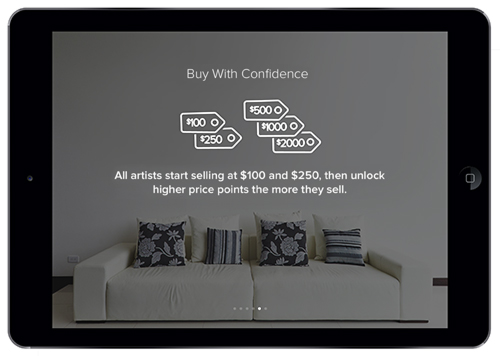Analysis
New App Vango Simply Wants To Revolutionize the Art Market


Cait Munro

Another day, another creation that will supposedly “transform the art market.” Despite our fatigue with this stripe of hyperbolic missionary statement, we somehow still can’t shake our curiosity. This time, the culprit is Vango, an app that, according to the Daily Californian, hopes to turn the “enduringly inaccessible” art market into something less insular by “encouraging interactivity and dismantling barriers of market access for artists and buyers alike.”
Vango users can browse or search collections, and even upload a picture of a room they are looking to furnish and get recommendations from the app based on a color breakdown of the space. There is also a tiered pricing structure, which begins at $250. Supposedly, this is to take the price intimidation factor out of the equation for buyers, and make it easier for artists to price their own works, something emerging talents are often shy about. As artists reach certain sales benchmarks, they unlock higher tiers, including the $500, $1,000, and $2,000 levels. After the $2,000 tier, artists access the “pro” level, which allows unrestricted pricing over $2,000. However, this raises some questions about how an artist is supposed to access the app if they don’t have any art they would like to sell for $250.
Artists receive 80 percent commission for their works, a definite win compared to gallery rates. Painter and Vango user Reinder Oldenburger praises the app: “Price is fixed, there are no hidden fees and shipping is free. Vango even provides artists with shipping labels and a certificate of authenticity to include with the sold work, so all that’s left for me to do is pack the painting and drop it off at the post office.” Texas-based painter Lindy Cook Severns agrees: “To the galleries, I’m a landscape painter…Vango doesn’t restrict the genre or subject an artist uploads. Vango opened up not only a price point I hadn’t been marketing, but also a creative door for me as an artist.”
Vango currently boasts some 2,000 artists, about 6,000 unique works, and big plans for the future. The model is skewed toward emerging and lesser-known artists, which isn’t necessarily a bad thing, but we doubt big name galleries will take much notice. From the sounds of it, Vango is bigger competition for websites like Etsy, where a painting is often priced around $500. After all, choosing to name your app after an artist who only sold one work during his lifetime and died destitute doesn’t exactly inspire confidence.